- Home
- >
- Preservation Archaeology Blog
- >
- Teaching Archaeology
(January 31, 2017)—A couple of weeks ago, Lewis Borck and I (along with our friend and fellow archaeologist, Ashleigh Thompson) went to the Khalsa Montessori School here in Tucson to talk about archaeology to a group of first through third graders. We had it on good authority (from Lewis’s daughter, Maya, who is in the class) that the kids and teachers were pretty excited for us to come talk to them about what we do. I was pretty excited, too.
We were told that their curriculum includes the origins of humans, and focuses on fundamental human needs like shelter, clothing, food, and artistic expression, and how those things have changed over time. This part was really fun because we got to show the kids some of the cool things from our teaching collections.
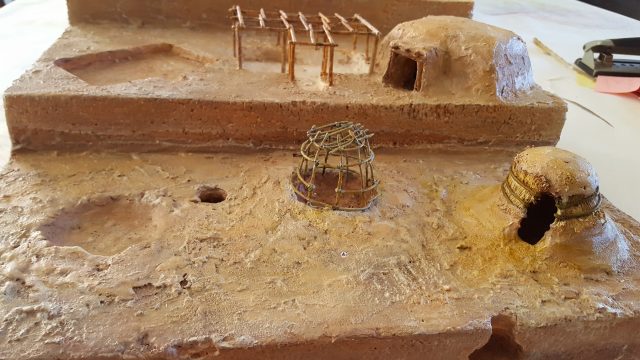
We brought a model, built by our friend Rob Ciaccio from Desert Archaeology, that shows two different types of pithouses: one from the Early Agricultural period here in Tucson (about 3,500 years ago) and one from the Hohokam period (about 1,000 years ago). That made it a lot easier to talk about changes in shelter through time.
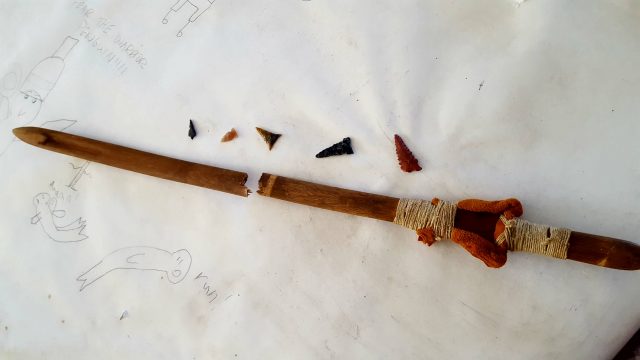
We also brought replica projectile points (including a Clovis point, and archaic point, and a Hohokam point), and a replica atlatl. With these we could talk about changing hunting strategies through time. The kids were quick to pick up on the fact that you wouldn’t hunt a cottontail with the same tool you would use to hunt a mammoth.
We brought some real artifacts with us, too. We have a teaching collection that includes various unprovenienced artifacts that can’t tell us much about the past, because they’ve lost their context. A lot of these things come from collectors who donate their collections to us or to the Arizona State Museum (ASM).
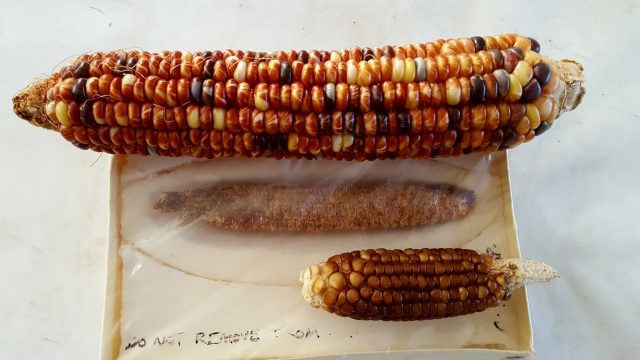
We brought dried ears of corn (some ancient, some modern) to illustrate the change in lifestyle from hunting/gathering to farming. And a yucca sandal and some woven cotton cloth to show the kinds of clothes people used to wear.
We passed around different ceramic sherds so the kids could see how pottery styles change through time. And we even brought in a replica Hohokam red-on-buff jar, which they really liked!
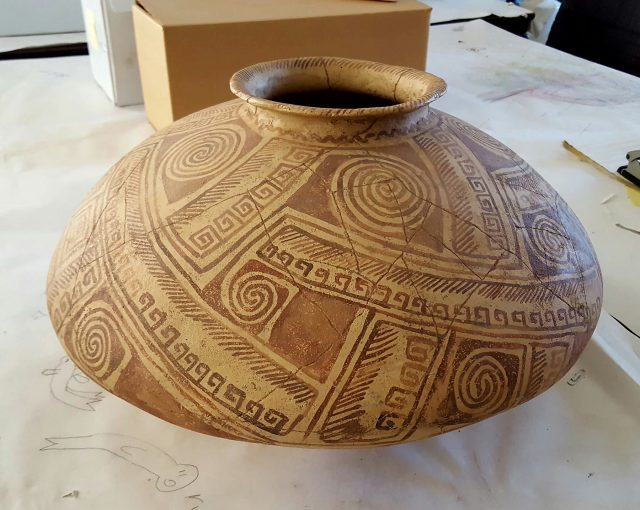
We talked about what to do when visiting an archaeological site—how looking at things and taking pictures is OK, as long as it is done with respect, but you always have to leave artifacts where you find them and never damage or vandalize a site. I think it really hit home when we explained that removing artifacts from a site is kind of like tearing pages out of a book; you can’t tell the whole story without the missing pages and the pages don’t make sense anymore without the rest of the book.
At the end, we all went outside and stretched out a 100-foot-long tape to represent time. We put the youngest kid in the class at the beginning of the tape, then I got to represent the old adult at about 3.5 ft. Then we started adding some of the artifacts to the timeline, from the 500-year-old pottery sherds to the Clovis point all the way down at the 100-ft mark. That was a fun and interactive way to show how old some of these things are to a group of 7 to 9 year olds who think their parents and teachers are practically ancient.
I had a really good time talking about archaeology to the class but, as always, I wondered how much they actually “got”—and how much stuck with them. Then, last week, we received handmade cards from each of the kids telling us how much they loved our presentation with some pretty specific reasons why. One even said that she wanted to become an archaeologist when she grows up, so that seems like a pretty solid win!
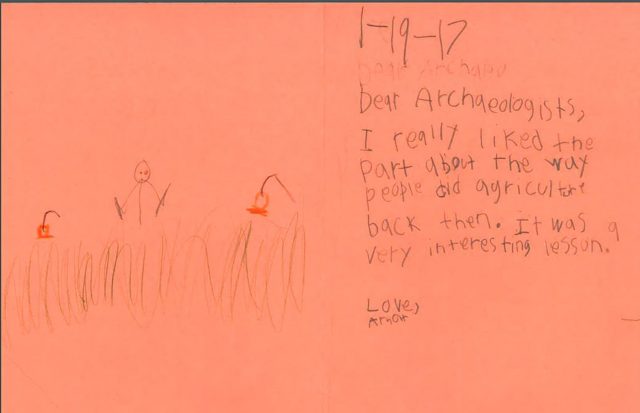
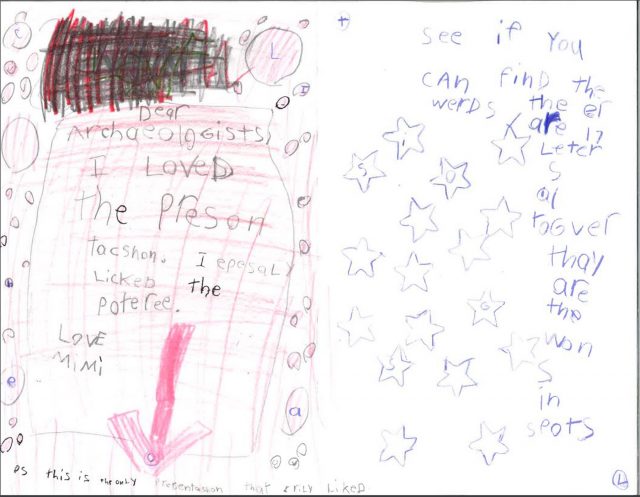
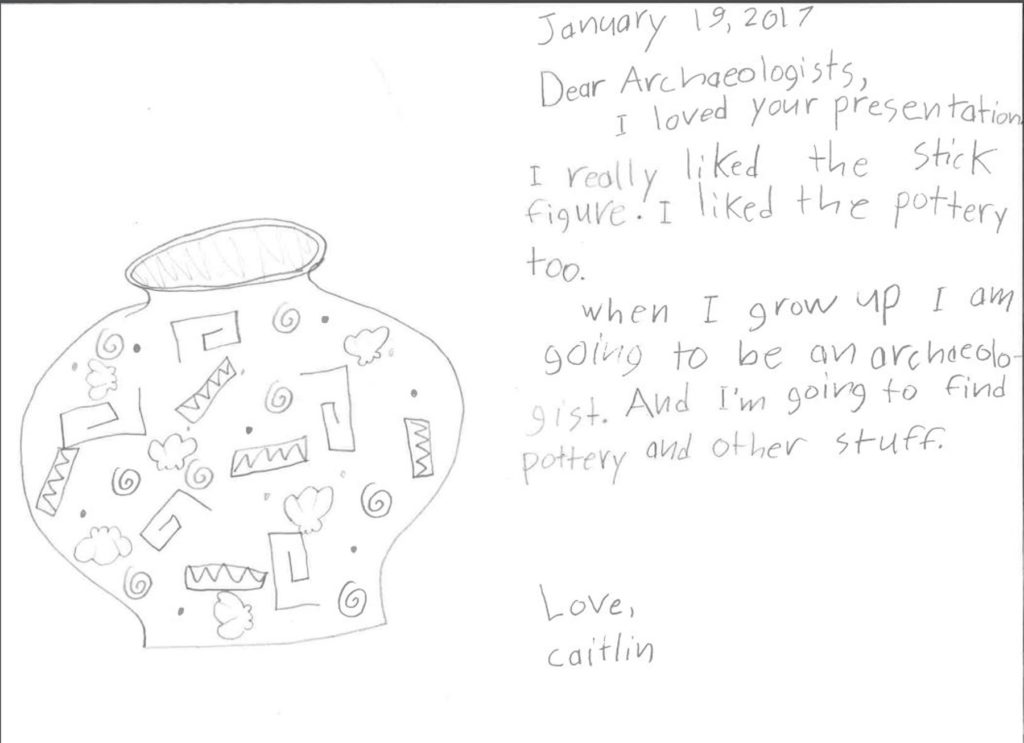
One thought on “Teaching Archaeology”
Comments are closed.
Explore the News
-
Join Today
Keep up with the latest discoveries in southwestern archaeology. Join today, and receive Archaeology Southwest Magazine, among other member benefits.
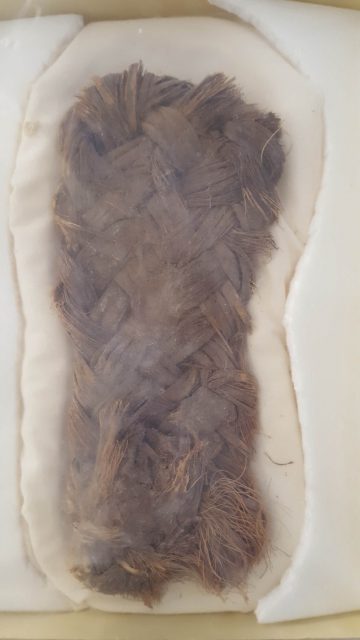
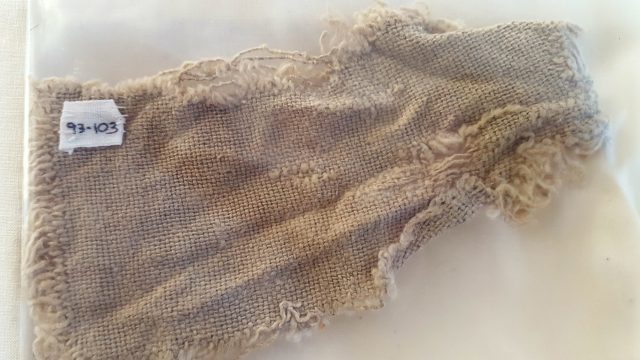
Your presentation was great & right on target to reach elementary kids. You really need to hit middle school & high school students, though, because that’s where you start to lose them. Keep up the good work.